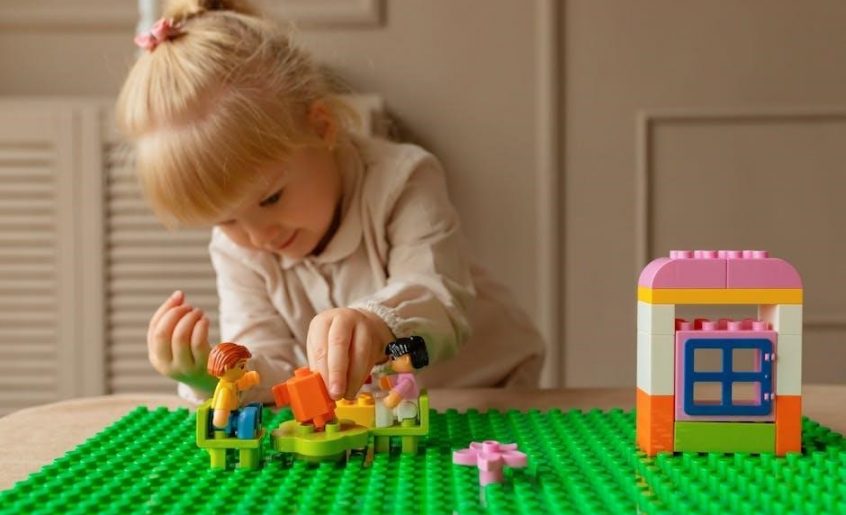First LEGO League (FLL) introduces STEM concepts to children aged 4-16 through hands-on learning. It fosters problem-solving, creativity, and teamwork while making learning fun and engaging for young minds.
Overview of FLL and Its Mission
First LEGO League (FLL) is a global program inspiring young minds through STEM education. Its mission is to make science, technology, engineering, and math accessible and fun for children aged 4-16. By combining LEGO building with real-world challenges, FLL fosters problem-solving, creativity, and teamwork. Participants engage in hands-on learning, preparing them for future careers in STEM fields while encouraging collaboration and innovation. FLL’s goal is to empower the next generation of thinkers and innovators worldwide.
Age Groups and Participation Criteria
First LEGO League (FLL) is designed for children aged 4-16, divided into age-specific divisions: Jr. (4-6 years) and Challenge (7-16 years). Teams consist of 2-10 members, guided by adult mentors. Participation requires teamwork, creativity, and problem-solving skills. No prior experience is necessary, as FLL aims to inspire STEM interest through hands-on learning. The program emphasizes collaboration and innovation, preparing young minds for future STEM careers while fostering a love for learning in a fun, engaging environment.

Understanding FLL Building Instructions
FLL building instructions guide participants through constructing LEGO models, fostering creativity and problem-solving skills. They provide step-by-step plans, enabling teams to build functional robots and innovative solutions effectively.
Key Components of FLL Kits
FLL kits are designed to provide teams with the essential tools to build and program robots. They include LEGO bricks, motors, sensors, and programming software. These components enable teams to design, construct, and operate robots capable of solving complex challenges. The kits are tailored to promote STEM learning through hands-on activities, encouraging creativity and innovation. Each kit is carefully curated to ensure teams have everything needed to participate effectively in FLL competitions and develop practical engineering skills.
LEGO Education SPIKE Sets
LEGO Education SPIKE sets are essential tools for FLL teams, providing versatile LEGO elements, motors, and sensors. These sets are designed to foster creativity and innovation, allowing teams to build and program robots tailored to specific challenges. SPIKE sets integrate seamlessly with LEGO’s programming software, enabling teams to develop complex robotic systems. They are ideal for hands-on STEM learning, promoting problem-solving and collaboration. The modular design of SPIKE sets makes them adaptable for various FLL missions and competitions, ensuring teams can innovate and iterate effectively.
Role of LEGO Minifigures in FLL Builds
LEGO minifigures play a unique role in FLL builds by adding a human scale and theme to robot designs. They help teams visualize interactions and meet mission requirements. Often used to demonstrate functionality, minifigures also inspire creativity and storytelling. While not essential for core mechanics, they enhance presentations and align with FLL’s emphasis on innovation and engagement. Minifigures are a popular element in FLL builds, fostering teamwork and fun while integrating into the overall design aesthetic.

Core Building Concepts for FLL Robots
Core concepts include stability, modularity, and precise mechanisms. Robots must be durable, adaptable, and efficient, ensuring reliability during missions and competitions while maintaining simplicity.
Stability and Balance in Robot Design
Stability and balance are crucial for FLL robots to perform reliably. A low center of gravity and wide base prevent tipping. Distribute weight evenly and use rigid frames. Ensure attachments don’t compromise balance. Testing on slopes and uneven surfaces helps verify stability. Adjustments like adding counterweights can improve performance. A stable robot minimizes mission failures and ensures consistent scoring in competitions.
Modularity in FLL Builds
Modularity is key to efficient FLL robot design, allowing teams to swap or upgrade components easily. By building in sections, such as detachable arms or interchangeable attachments, teams can adapt quickly during competitions. This approach simplifies troubleshooting and enhances scalability. Modular designs also promote organization and collaboration, as team members can focus on specific sections. Using LEGO elements like beams, axles, and connectors enables seamless integration of modular parts, ensuring flexibility and improving overall build efficiency.
Essential LEGO Bricks and Pieces for FLL
Key LEGO bricks for FLL include beams, axles, and gears, which form the backbone of robot structures and mechanisms. Motors and sensors are vital for automation and interaction. LEGO Technic pieces like pins, connectors, and cable clips ensure stability and flexibility. Plates and tiles help in detailing, while LEGO minifigure accessories add character. These elements, combined with LEGO Education SPIKE components, enable teams to create versatile, functional, and competition-ready robots tailored to specific challenges.
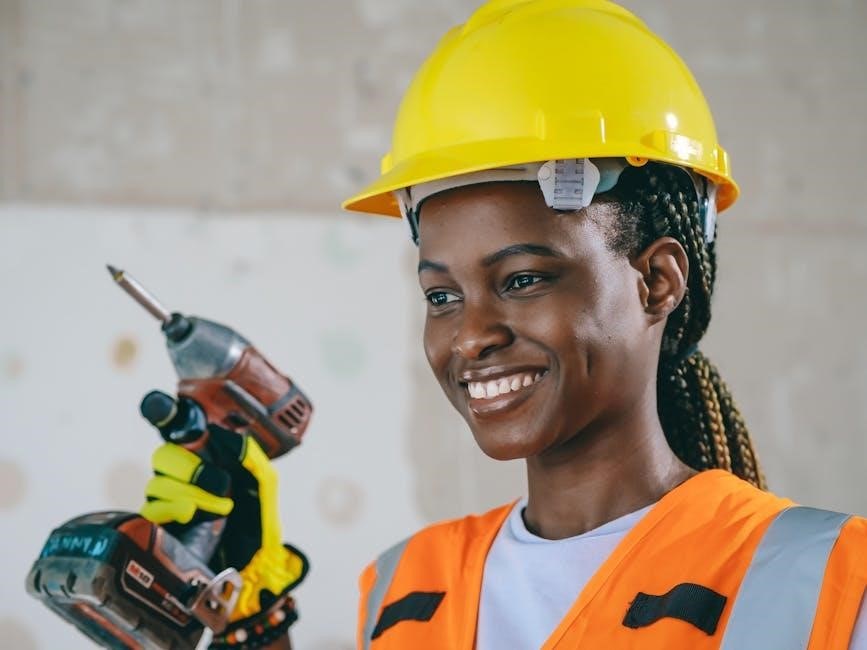
Step-by-Step Building Guide for FLL Robots
Start with planning, then build a sturdy frame, add attachments, integrate motors, and test functionality. Iterate designs based on performance and feedback to optimize efficiency.
Planning and Designing Your Robot
Begin by understanding competition requirements and mission constraints. Define your robot’s purpose and assess necessary functionalities. Sketch ideas, prioritizing tasks and movements. Consider field layout and rules to optimize design. Choose components that align with objectives, ensuring efficiency and durability. Create a visual guide or prototype to visualize the build. Iterate designs based on simulations or feedback to refine performance. A well-planned design ensures a functional, competition-ready robot, saving time during assembly and testing phases.
Building Basic FLL Robot Frames
Start with a sturdy, lightweight base using LEGO Technic beams and frames. Ensure stability by distributing weight evenly and maintaining a low center of gravity. Use axles and wheels for smooth movement and attach a motor for propulsion. Reinforce connections with pins and brackets for durability. Keep the design modular to allow easy additions later. A well-constructed frame provides the foundation for a reliable and efficient robot, enabling it to perform tasks effectively during competitions.
Adding Attachments and Functionalities
Once the base frame is built, focus on adding attachments tailored to specific missions. Use LEGO Technic pieces like beams, gears, and axles to create functional mechanisms. Attachments such as claws, arms, or lifters can be designed to interact with mission models. Ensure attachments are securely fastened and aligned properly. Integrate motors and sensors to automate functions, improving efficiency. Test each addition to ensure it enhances performance without compromising the robot’s stability or speed. This step is crucial for achieving mission objectives during competitions.
Testing and Iterating Your Build
After constructing your robot, conduct thorough testing to evaluate its performance and functionality. Observe how it moves and interacts with mission models. Identify any issues, such as mechanical failures or inaccuracies, and refine the design. Repeat testing after each modification to ensure improvements.Iteration is key to achieving optimal performance. Use feedback from team members or mentors to pinpoint weaknesses and enhance reliability. This process ensures your robot is competition-ready and capable of executing missions effectively.
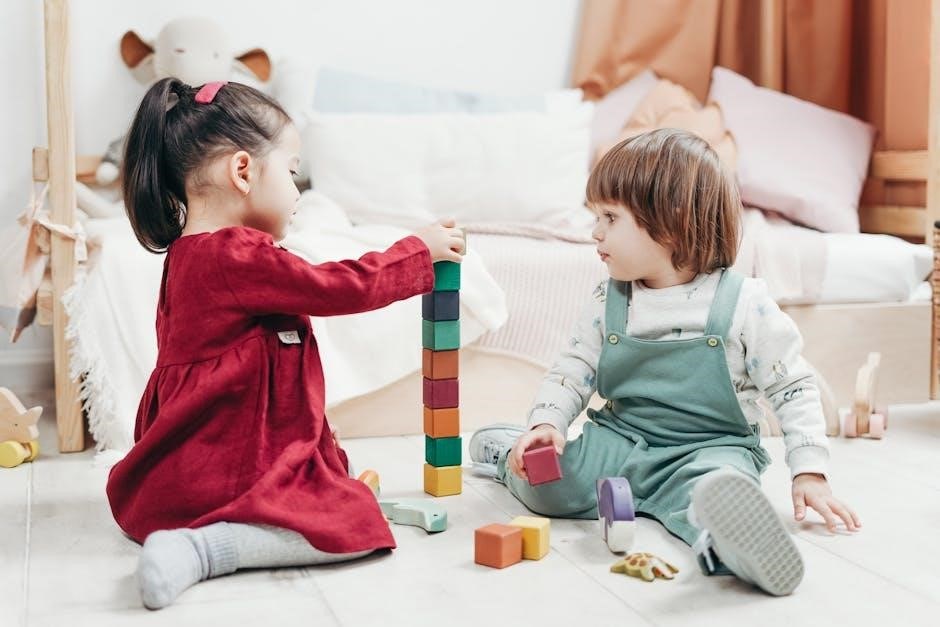
Programming and Integrating Sensors
Programming and sensor integration are fundamental for creating intelligent FLL robots. Sensors like touch, color, and ultrasonic enable robots to interact with environments, improving navigation and object detection accuracy.
LEGO programming environments like LEGO MINDSTORMS and LEGO Education SPIKE provide intuitive tools for FLL teams to code their robots. These platforms offer visual, block-based programming, making it accessible for students of all skill levels. The software, such as LEGO MINDSTORMS EV3 and Scratch-based interfaces, allows teams to create sequences, control motors, and integrate sensors. These environments foster problem-solving and critical thinking while enabling teams to bring their robotic creations to life with precision and creativity.
Integrating Sensors for Autonomous Missions
Sensors are crucial for enabling autonomous robot behavior in FLL missions. Teams use sensors like color, touch, and gyro to detect environments and make decisions. For example, a color sensor can identify mission objects, while a gyro sensor aids in navigation. These sensors are integrated into the robot’s programming to trigger specific actions, such as stopping or changing direction. Proper calibration and testing ensure accurate data collection, allowing robots to perform tasks independently during competitions.
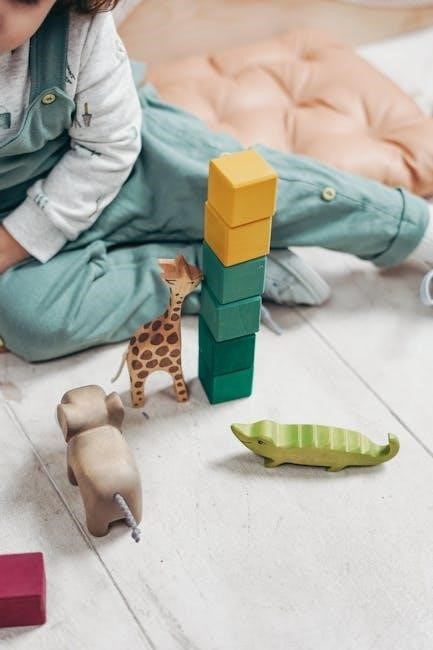
Advanced Building Techniques
Explore complex mechanisms like gear systems, pneumatics, and custom LEGO creations to enhance robot functionality and efficiency in FLL challenges, pushing creative building to new levels.
Gear Systems and Mechanisms
Gear systems are essential for transferring motion and adjusting speed or torque in FLL robots. LEGO gears, such as spur gears, bevel gears, and worm gears, enable precise mechanical control. By combining gears, teams can create complex mechanisms like lifts, arms, or conveyor belts. Proper alignment and ratio selection are critical for efficiency. Mastering gear systems allows robots to perform tasks requiring precise movement, such as picking up objects or navigating obstacles, making them indispensable in FLL challenges.
Pneumatics and Motion Control
Pneumatics add advanced motion control to FLL robots, enabling smooth, precise movements. LEGO pneumatic components, such as air pumps and cylinders, allow robots to perform tasks like gripping objects or lifting mechanisms. These systems provide consistent and controlled actions, essential for delicate operations. By integrating pneumatics, teams can achieve complex motions with minimal mechanical interference, enhancing their robot’s functionality and versatility in FLL challenges.
Building LEGO Minifigure-Scale Models
Building LEGO minifigure-scale models combines precision and creativity to replicate real-world objects at a smaller size. Teams often use these models to showcase their understanding of FLL themes or for display purposes. Key considerations include maintaining proportion, using small LEGO elements, and ensuring color consistency. Techniques like SNOT (Studs Not On Top) can add intricate details without bulk. Start with a base plate, build upward step-by-step, and incorporate hinges or joints for dynamic poses. These models are perfect for storytelling and adding personality to your FLL builds.
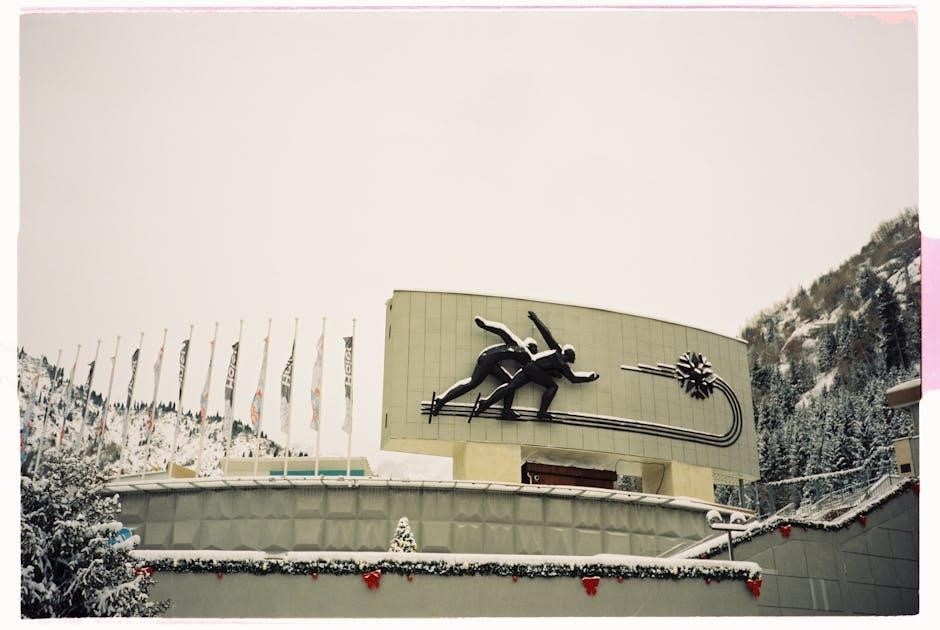
Preparing for FLL Competitions
Preparing for FLL competitions involves understanding rules, practicing robot runs, ensuring reliability, and adapting strategies. Research past challenges, gather feedback, and refine builds for optimal performance.
Understanding FLL Competition Rules
Understanding FLL competition rules is crucial for success. Robots must fit within a 30cm x 30cm x 30cm size limit and use only LEGO components. Missions are scored based on completion, with penalties for rule violations. Teams must adhere to time limits during runs and follow field setup guidelines. Judges evaluate robots on design, programming, and innovation. Familiarize yourself with rules for robot behavior, scoring zones, and teamwork expectations to avoid disqualification and maximize points.
Optimizing Your Build for Scoring
Optimizing your FLL robot for scoring involves simplifying designs, ensuring reliability, and focusing on high-value missions. Use modular components to easily swap attachments for specific tasks. Precision-engineered mechanisms improve efficiency and reduce errors. Lightweight materials enhance speed and maneuverability. Prioritize attachments that score consistently and avoid overly complex systems that may fail. Test and iterate to fine-tune performance, ensuring your robot can complete missions quickly and accurately. Balance durability with functionality to maximize points during competitions.
Tips for Successful Robot Presentations
Clear communication is key to successful robot presentations. Practice explaining your robot’s design, functionality, and innovations confidently. Use visual aids like diagrams to highlight mechanisms. Emphasize how your build addresses mission challenges and incorporates creative solutions. Showcase teamwork and problem-solving skills, demonstrating how each member contributed. Stay organized, speak clearly, and maintain eye contact. Highlight unique features and improvements made during iterations. Enthusiasm and professionalism will leave a lasting impression on judges and showcase your team’s dedication to FLL values.
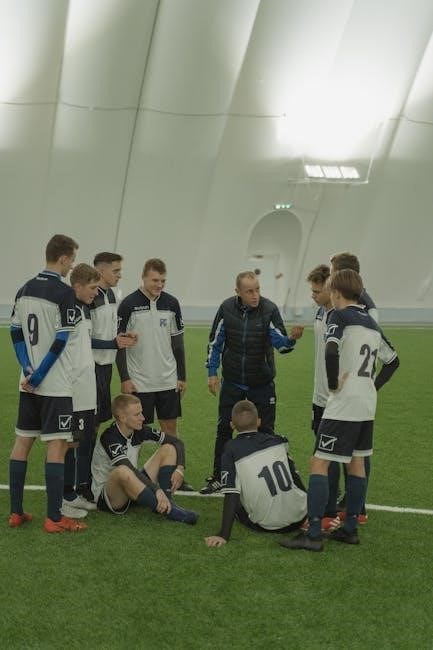
Troubleshooting Common Issues
Common issues in FLL builds often involve structural weaknesses or mechanical failures. Identifying the root cause and testing individual components can help resolve problems. Rebuilding or adjusting parts, along with consulting guides or seeking advice from experienced builders, ensures robust and functional designs.
Fixing Structural Weaknesses
Structural weaknesses in FLL robots often stem from poor part alignment or insufficient support. Adding cross beams and reinforcing joints with axles or pins can enhance stability. Ensuring bricks are snugly connected and motors are securely attached prevents loosening during operation. Regular testing helps identify vulnerabilities, while rebuilding problematic sections may be necessary for optimal performance. Consulting official guides or seeking advice from experienced builders can provide effective solutions to strengthen designs.
Addressing Programming Challenges
Programming challenges in FLL often arise from sensor inaccuracies or motor synchronization issues. Start by recalibrating sensors and ensuring motors are properly configured. Use debugging tools to identify errors in logic or timing. Break complex tasks into simpler functions and test each component separately. Regularly simulate programs and review code line by line. Collaborate with team members to brainstorm solutions and refer to LEGO programming guides for troubleshooting tips. Thorough testing ensures reliable performance during competitions.
Resources and Community Support
FLL participants can access official LEGO guides, online forums, and community workshops. These resources provide tutorials, troubleshooting tips, and inspiration for building and programming robots effectively.
Official FLL Building Guides
Official FLL building guides offer step-by-step instructions for constructing robots and mechanisms. These resources, available on the LEGO Education website, cover essential components like motors, sensors, and gears. They emphasize modularity, stability, and functionality. Guides also include tips for integrating LEGO minifigures and custom attachments. Participants can learn best practices for building competitive robots. Additionally, the guides highlight how to optimize designs for specific missions and rules. They serve as a foundation for both beginners and experienced builders, ensuring a solid understanding of FLL robot construction principles.

Online Communities and Forums
Online communities and forums are invaluable for FLL participants seeking advice and inspiration. Platforms like Reddit’s r/FLL and official LEGO forums offer tips, tutorials, and shared experiences. Teams can discuss building techniques, troubleshoot issues, and learn from experts. These spaces foster collaboration and innovation, helping builders refine their skills. Active engagement in these communities can lead to improved robot designs and better mission outcomes. They are a great resource for staying updated on trends and best practices in FLL building.
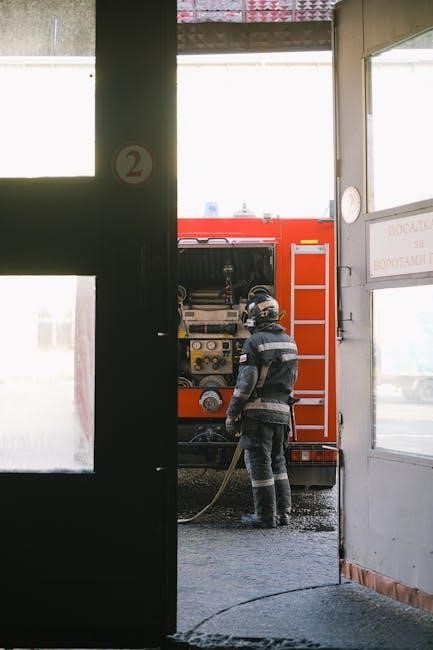
Getting Started with FLL
Embark on the exciting journey of FLL by discovering local teams or forming your own. Gather essential resources like kits, guides, and mentor support. Begin with simple builds and gradually explore complex mechanisms. Hands-on experience is key to mastering LEGO robotics and programming. Stay curious, learn from failures, and embrace the creative process to prepare for competitions and innovation challenges.
Joining a Team or Starting Your Own
Joining an FLL team offers a collaborative environment for learning and innovation. If starting your own, recruit members with diverse skills, secure a mentor, and gather necessary resources. Research local FLL organizations for guidance and registration. Whether joining or creating a team, focus on fostering teamwork, creativity, and problem-solving. Begin with simple projects to build confidence and gradually tackle complex challenges. Embrace the FLL spirit of friendly competition and continuous improvement.
Where to Find FLL Building Instructions
FLL building instructions are widely available online and through official LEGO Education resources. The LEGO Education website offers comprehensive guides tailored for FLL challenges. Additionally, community forums, YouTube channels, and social media groups share tutorials and tips. Local libraries and schools often provide access to FLL materials. Utilize these resources to enhance your building skills and stay updated on the latest techniques for creating competitive robots.
